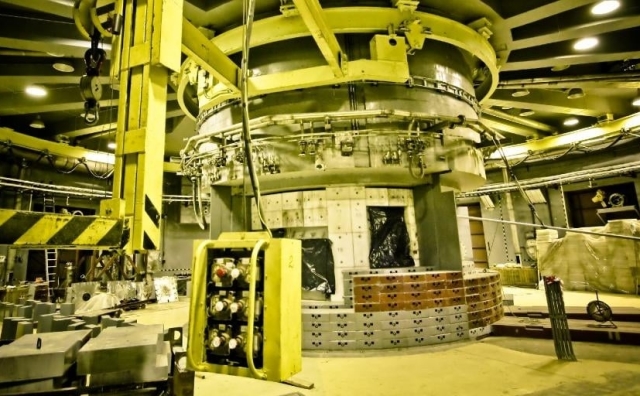Neutron research reactor PIK, which is Gatchina near St. Petersburg, went to the next stage energy start — his power has begun to raise the level of 10 MW, and the output of the reactor operating power of 100 MW is planned EN 2022. The conclusion of the reactor on the energy mode of operation is stated in the message on the website of the Kurchatov Institute.
The PIK reactor was built in 1976 at the Konstantinov Institute of Nuclear Physics in St. Petersburg (PIYAF), which is now part of the Kurchatov Institute. The neutron flux it was supposed to generate was proposed to be used for high-precision studies of the structure of matter — in particular, biological molecules, which are difficult to study using X-ray or synchrotron radiation.
After the Chernobyl accident, construction was halted and resumed only in 2007. In February 2011 , a physical start — up took place at a power of about 100 watts-at the minimum controlled power level. At the same time, the reactor was included in the Megasiens program, which provides support for the construction of large scientific facilities in Russia with international participation. This program also includes the construction of the NICA collider in Dubna, and the creation of a new synchrotron in Protvino.
At the end of February 2019, it was announced that the reactor had passed the first stage of power start-up and was brought to an energy of 100 kilowatts. Then it was reported that the output of 1 megawatt of energy should take place before the end of 2019.
On Monday, during a meeting of the Council for Science and Education, the president of the Kurchatov Institute, Mikhail Kovalchuk , announced that test experiments are beginning at the first five experimental stations of the PIK reactor, two of which were created by German scientists. In total, 25 experimental stations are planned to be built at the reactor. As the representative of the PYP told N + 1, at this stage the reactor began to be brought to the level of 10 megawatts. One of the project participants, in turn, said that the reactor previously operated at a capacity of 3 megawatts. Scientists and engineers will then begin testing the reactor's operability and controllability in this power range. Full-fledged scientific work on the reactor will begin after its output to a capacity of 100 megawatts, the output to this stage is expected in 2022, the representative of the PIYAF said.
You can read about the history and purpose of the PIK neutron reactor in our article "Energy Launch", and about another Russian mega — plant, the construction of which is nearing completion — about the NICA collider-read in the article "Small Explosion" .
Sergey Kuznetsov

